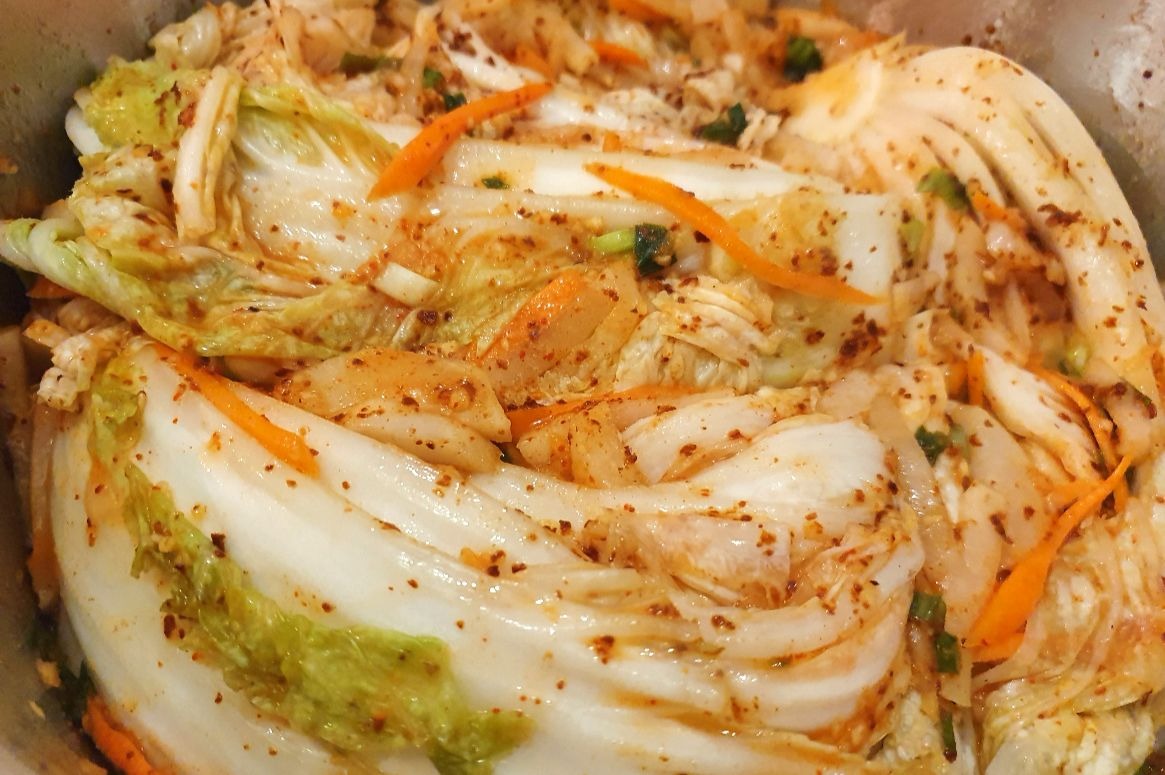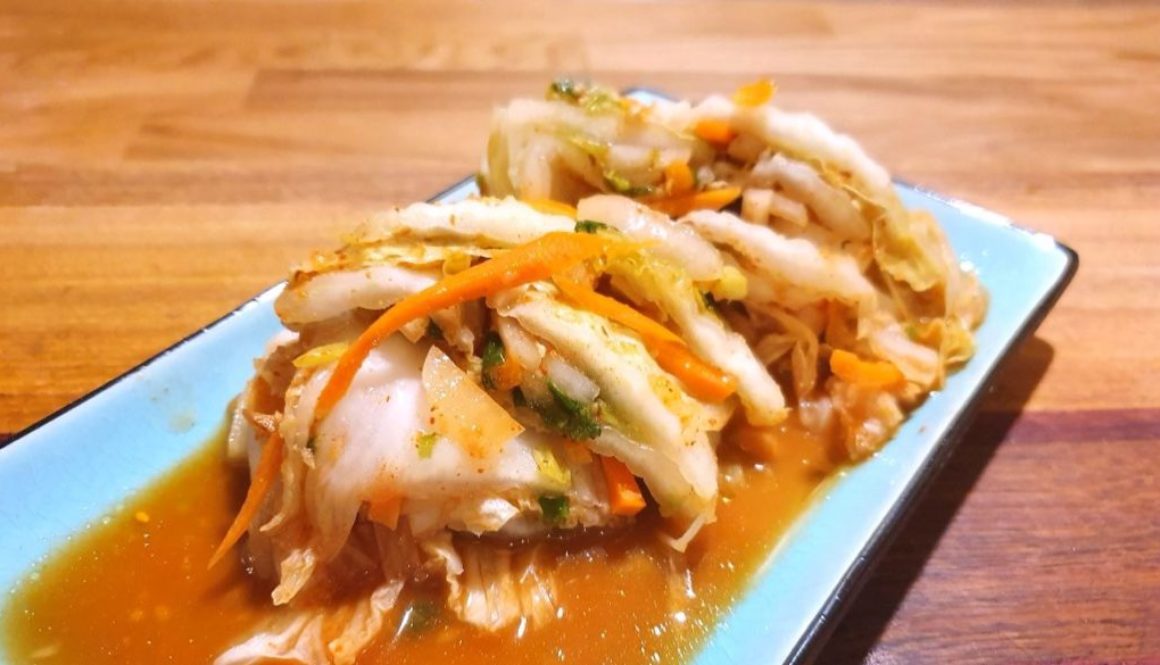Kimchi
Kimchi (김치) is a classic side dish of Korean. It is a mixture of fermented Napa cabbage, Korean radish, carrot, green onion, garlic and ginger flavored with gochugaru-type chili which is flavored with shrimp paste and fish sauce. There are thousands of variations on how to make Kimchi, and it’s almost impossible to do it wrong, just the taste depends on the maker and the recipe used. Classically, kimchi is made during the autumn when the temperature turns to be lower for fermentation. In Korea, kimchi is stored in thick-walled clay pot dug into the ground and kept over winter to protect kimchi from freezing. Kimchi fermentation temperature is 5-14 degrees Celsius and it takes 1-3 weeks. As a result, the ready-made kimchi remains crunchy and delicious.
The first kimchi recipes date back to the days of the Three Kingdoms some 2000 years ago. Initially, the kimchi was not spicy at all. Ginger and chili were added to the recipe about 400 years ago. Kimchi gained wider recognition over the world in the 20th century.

Preparation time: 3-4 h preparation, 36-48 h fermentation at room temperature
Level: Easy
Quantity: One large Napa cabbage
Ingredients:
One big Napa cabbage
One medium carrot
4-5 medium garlic cloves
About 5 cm piece of raw ginger
One average Korean radish
One bunch of spring onions
One medium onion
Half a cup of sea salt
30-50 ml fish sauces
3-4 tablespoons shrimp paste (optional)
2 tablespoons rice flour
2 tablespoons gochugura chili
Preparation:
1. Cut the Napa cabbage by 1/3 at the root-side and pull it in half so the leaves are released well
2. Similarly, cut the halved Napa cabbage into four pieces
3. Soak the cabbage in water, drain and sprinkle the sea salt between the leaves. Leave aside for 3-4 hours. During the salination, the primary fermentation process is initiated.
4. Prepare the kimchi paste. Boil rice flour porridge, add 1.5 tablespoons of rice flour to the water and bring to boil
5. Crush the garlic, ginger, onion in a food processor, add the rice porridge, fish sauce, shrimp paste and chilly. Mix until homogenous
6. Cut Korean radish and carrot into strips, green onions in pieces and mix with the kimchi paste
7. Once the Napa cabbage is salted, soak it in water for 5-10 minutes and drain well.
8. If desired, use rubber gloves and spread the finished kimchi paste between the Napa cabbage leaves.
9. Press the flavored Napa cabbage sectors into the bottom of a stainless pot or ceramic bowl. Try not to leave too much air between the cabbages. Cover and leave to ferment.
In Korea, part of the freshly-made kimchi is eaten raw, which is totally different in taste, but also delicious.
10. Allow fermenting at room temperature for 36-48 hours. During fermentation, occasionally press down the cabbages. The bubbles show that the fermentation process is taking place.
11. Store kimchi at +4 degrees for up to 2 months. During this time, the slow fermentation continues, but the kimchi remains delicious.
Serve with rice, sprinkle over roasted sesame seeds before serving.
Ready!

